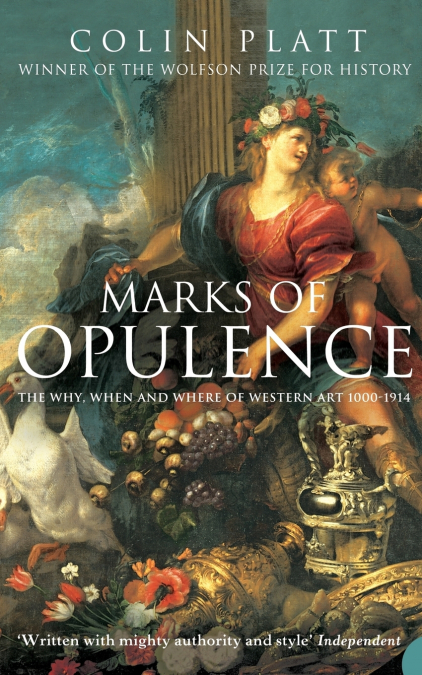
 Librería Perelló (Valencia)
Librería Perelló (Valencia)
 Librería Aciertas (Toledo)
Librería Aciertas (Toledo)
 El AlmaZen del Alquimista (Sevilla)
El AlmaZen del Alquimista (Sevilla)
 Librería Elías (Asturias)
Librería Elías (Asturias)
 Librería Kolima (Madrid)
Librería Kolima (Madrid)
 Donde los libros
Donde los libros
 Librería Proteo (Málaga)
Librería Proteo (Málaga)
A sweeping, beautifully written history of artistic patronage from 1000 to the present day by a Wolfson Prize-winning historian. ‘Marks of Opulence’ is a magisterial survey of European art and artistic patronage from 1000 until the birth of modernism. Tracing the history from the discovery of silver in the Harz mountains, through the catastrophic effects of plague in the 14th-century, to the studied magnificence of papal and royal courts in the 16th- and 17th-centuries, Platt shows how the great and the good have always used art to bolster political power. Arguing that the acquisitive instinct – felt by all of us in different ways – is central to the history of Western art, Platt traces how art began to move out of the palaces of the aristocracy into the homes of merchants, bankers and industrialists. From the mid 19th-century onwards, and in the pre-war Belle Époque in particular, it was the immensely wealthy ’robber barons’ and their widows – in London and Paris, in Berlin and Vienna, in Moscow and Barcelona, in Philadelphia and New York – who collected the work of the most innovative artists and broke the hold of the Academies on Western art. Professor Platt’s ambitious sweep through a thousand years of artistic endeavour in the West argues throughout that a superfluity of money is the chief driver of high achievement in the arts, and for the transforming power of great riches.